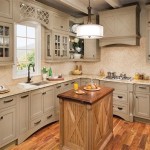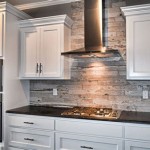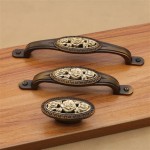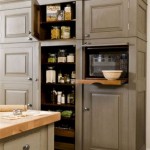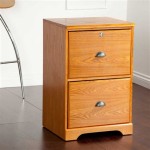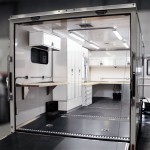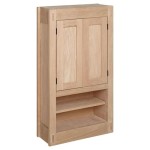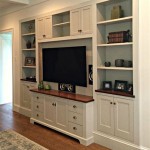The Perfect Dining Room Corner Cabinet Ideas: 2024 Designs
The dining room serves as a focal point for gatherings, meals, and shared moments. Optimizing space and enhancing aesthetics within this area are crucial considerations for homeowners. Corner cabinets present an ideal solution for maximizing storage and adding architectural interest. The year 2024 brings forth innovative designs and functional features for these often-overlooked pieces of furniture. This article explores various corner cabinet ideas designed to elevate dining room functionality and visual appeal.
The selection of a suitable corner cabinet requires careful consideration of factors such as available space, existing décor, storage needs, and desired aesthetic. Understanding these factors is paramount to choosing a cabinet that seamlessly integrates into the dining room and fulfills its intended purpose. Various configurations, materials, and styles cater to diverse preferences and spatial requirements, allowing homeowners to personalize their dining room in a practical and visually pleasing manner.
Optimizing Space with Functionality
Corner cabinets are inherently designed to utilize space that is frequently underutilized. In many dining rooms, corners remain empty or are occupied by decorative items that offer minimal practical benefit. A well-chosen corner cabinet transforms this space into a valuable storage area, providing a home for dishes, glassware, linens, and other dining essentials. The functional benefits extend beyond mere storage, contributing to a more organized and uncluttered dining environment. The strategic placement of a corner cabinet can also improve the flow of traffic within the room, minimizing obstructions and enhancing overall usability.
One of the key design considerations for optimizing space is the internal configuration of the cabinet. Shelving arrangements, drawer placement, and the inclusion of specialized storage solutions, such as wine racks or cutlery dividers, can significantly impact the cabinet's functionality. Adjustable shelves offer flexibility, allowing homeowners to customize the storage space to accommodate items of varying sizes. Drawers are particularly useful for storing smaller items, preventing clutter and facilitating easy access. Incorporating internal lighting can further enhance usability, making it easier to locate items within the cabinet, especially in dimly lit dining rooms.
The choice of door style also plays a crucial role in optimizing space. Cabinets with bi-fold or sliding doors minimize the amount of swing space required, making them suitable for smaller dining rooms or areas where space is limited. Hinged doors, while more traditional, require adequate clearance to open fully. Glass-fronted doors can create a sense of spaciousness by allowing light to penetrate the cabinet interior and showcasing displayed items. However, they also require careful attention to the arrangement and appearance of the items stored within.
Consider the footprint of the cabinet base. Some designs feature a flat base that sits flush against the wall, while others incorporate a raised or curved base. The choice depends on the desired aesthetic and the overall style of the dining room. A raised base can add visual interest and elevate the cabinet, while a flat base provides a more streamlined and contemporary appearance.
Aesthetic Integration and Design Trends
Beyond functionality, corner cabinets contribute significantly to the overall aesthetic of a dining room. The design, materials, and finish of the cabinet should complement the existing décor and reflect the homeowner's personal style. The year 2024 sees a continuation of popular trends, such as minimalist designs, natural materials, and subtle color palettes, alongside the emergence of new and innovative approaches.
Minimalist designs emphasize clean lines, simple shapes, and a lack of elaborate ornamentation. Corner cabinets in this style are often characterized by their understated elegance and focus on functionality. They typically feature a smooth, unadorned exterior, with hidden hardware and integrated handles. Natural materials, such as wood, stone, and glass, are frequently used in minimalist designs, adding warmth and texture to the overall aesthetic. Color palettes tend to be neutral, with shades of white, gray, and beige dominating the scene.
The use of natural materials continues to be a prominent trend in 2024. Wood, in particular, is highly valued for its warmth, beauty, and durability. Corner cabinets crafted from solid wood or wood veneer are a popular choice for dining rooms. Different wood species offer varying colors and grain patterns, allowing homeowners to select a material that complements their existing furniture and décor. Oak, maple, cherry, and walnut are all commonly used in corner cabinet construction. The use of sustainable and reclaimed wood is also gaining traction, reflecting a growing awareness of environmental concerns.
Subtle color palettes remain a key element of modern dining room design. Neutral colors create a sense of calm and sophistication, providing a versatile backdrop for other decorative elements. Corner cabinets painted in shades of white, cream, gray, or beige can seamlessly blend into any dining room setting. Accent colors can be introduced through accessories, artwork, or upholstery, adding pops of visual interest without overwhelming the space. For those who prefer a bolder look, deeper shades of blue, green, or even black can be used to create a dramatic and eye-catching focal point.
However, some emerging trends are starting to appear as well. The use of metallic accents, such as brass or copper hardware, is becoming increasingly popular. These accents add a touch of glamour and sophistication to corner cabinets, particularly those with a minimalist design. Geometric patterns and textures are also being incorporated into cabinet designs, adding visual interest and depth. Incorporating smart technology into corner cabinets is also on the rise, with features such as integrated lighting control, built-in charging stations, and even smart refrigerators or wine coolers.
Material Selection and Durability
The choice of materials is a crucial consideration when selecting a corner cabinet. The materials used not only affect the appearance of the cabinet but also its durability, longevity, and maintenance requirements. A well-constructed corner cabinet should be able to withstand the rigors of daily use and maintain its beauty for years to come. Therefore, it is essential to select materials that are both aesthetically pleasing and functionally sound.
Solid wood is a popular choice for corner cabinets, offering exceptional durability and timeless beauty. Hardwoods such as oak, maple, cherry, and walnut are particularly prized for their strength and resistance to wear and tear. Solid wood cabinets are typically more expensive than those made from other materials, but their longevity and inherent beauty make them a worthwhile investment. Proper care and maintenance are essential to preserve the beauty of solid wood cabinets. Regular cleaning with a soft cloth and the application of wood polish can help to protect the finish and prevent damage from moisture or sunlight.
Wood veneer provides an alternative to solid wood, offering a similar aesthetic at a lower cost. Wood veneer consists of a thin layer of hardwood applied to a substrate, such as plywood or particleboard. Wood veneer cabinets can be visually indistinguishable from solid wood cabinets, but they may not be as durable or resistant to damage. The quality of the substrate is a crucial factor in determining the durability of a wood veneer cabinet. Plywood is generally considered to be a more durable substrate than particleboard, as it is less prone to warping or cracking.
Engineered wood products, such as MDF (medium-density fiberboard) and particleboard, are commonly used in the construction of corner cabinets. These materials are less expensive than solid wood or wood veneer, making them a popular choice for budget-conscious homeowners. While engineered wood products are not as durable as solid wood, they can still provide adequate strength and stability for a corner cabinet. The quality of the finish is particularly important for engineered wood cabinets, as it helps to protect the material from moisture and damage. A durable finish, such as paint, laminate, or veneer, can significantly extend the lifespan of an engineered wood cabinet.
Hardware, such as hinges, handles, and drawer pulls, also contributes to the overall durability of a corner cabinet. High-quality hardware is essential for ensuring smooth operation and preventing premature wear and tear. Choose hardware that is made from durable materials, such as metal or solid wood. Avoid plastic hardware, as it is more prone to breaking or cracking. The style of the hardware should also complement the overall design of the cabinet. Simple, minimalist hardware is a good choice for contemporary designs, while more ornate hardware can add a touch of elegance to traditional designs.
Glass is often used in corner cabinets to create display areas or to add a sense of lightness and airiness. Tempered glass is a good choice for cabinet doors or shelves, as it is more resistant to breakage than standard glass. Tempered glass shatters into small, harmless pieces if it breaks, reducing the risk of injury. The thickness of the glass should also be considered. Thicker glass is more durable and less likely to crack or break. Beveled glass can add a touch of elegance to corner cabinets, while frosted glass can provide privacy and conceal stored items.
Consider also the maintenance requirements of different materials. Solid wood often requires periodic polishing and sealing, while laminate surfaces are typically easy to clean with a damp cloth. Evaluating the long-term care needs will help in choosing a material that suits one's lifestyle and commitment to upkeep. Thoughtful consideration of these factors will result in the selection of a corner cabinet that provides both functional storage and aesthetic enhancement for the dining room for years to come.

Building A Dining Room Cabinet Delightfully
Building A Dining Room Cabinet Delightfully

Neutral Cottage Style Corner Hutch In Love With This Transformation Pine And Prospect Home
Building A Dining Room Cabinet Delightfully

Kitchen Design 2025 Corner Cabinet Ideas Grace In My Space

Neutral Cottage Style Corner Hutch In Love With This Transformation Pine And Prospect Home

Diy Corner Cabinet For Dining Room Tutorial Thrifty And Chic

5 Ways To Organize A Corner Hutch Timber Table

Kitchen Design 2025 Corner Cabinet Ideas Grace In My Space

Ideas For Dining Room Built Ins Marissa Cal Home
Related Posts

